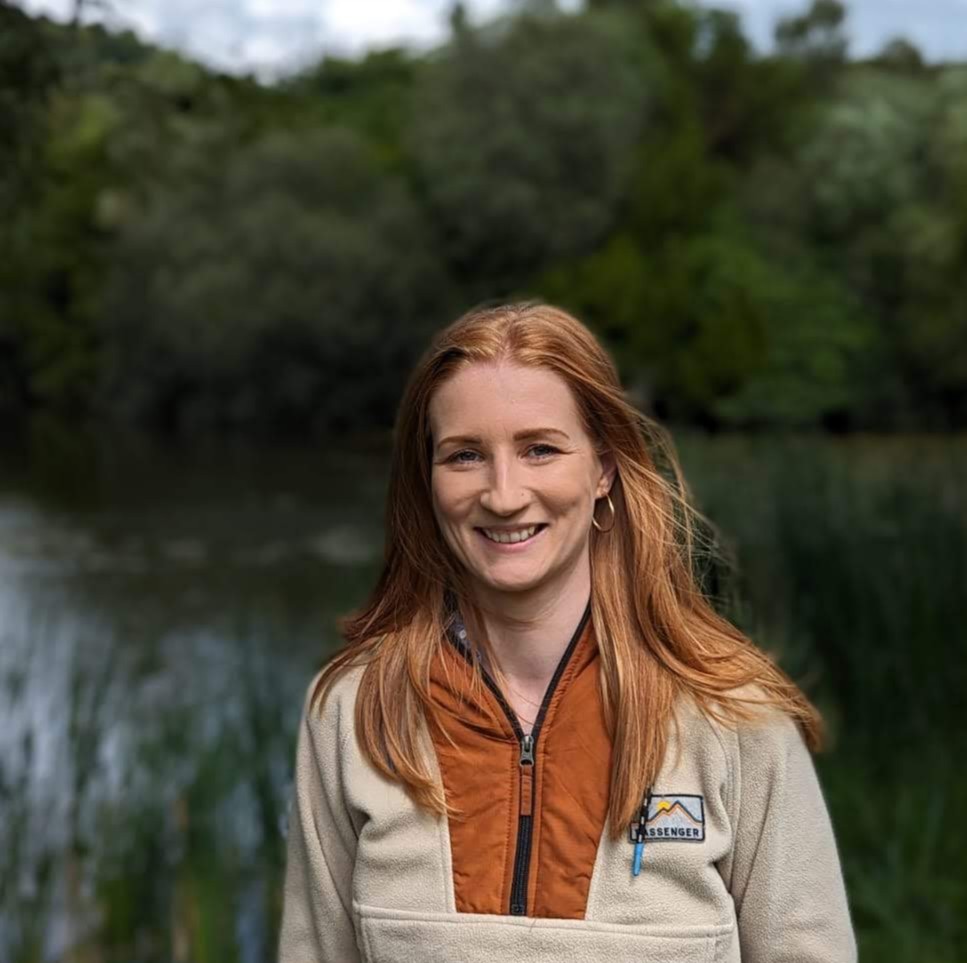Dr Emily Waddell
- Lecturer in Ecology (Social & Environmental Sustainability)
email:
Emily.Waddell@glasgow.ac.uk
pronouns:
She/her/hers
Biography
Emily Waddell is a forest and restoration ecologist whose research explores how anthropogenic pressures shape the structure, function and resilience of forest ecosystems. Her work aims to understand how ecosystems respond to environmental change, and how restoration and management can better support biodiversity, ecological processes and long-term ecosystem resilience.
Emily studied Zoology (BSc Hons) and Ecology (MRes) at the University of Glasgow, where she developed a passion for ecological research and tropical fieldwork through leading multiple expeditions with the Glasgow University Exploration Society. She went on to work with Froglife as a Trainee Project Officer, gaining experience in conservation practice, citizen science, and public engagement.
She completed her PhD at the UK Centre for Ecology & Hydrology, the University of York, and the Royal Botanic Garden Edinburgh, where her research focused on the drivers of exotic plant invasion in tropical forest remnants within oil palm-dominated landscapes. Her PhD work involved extensive field research in Malaysian Borneo and close collaboration with NGOs, industry partners and policy groups to maximise the applied impact of her findings.
Before joining the University of Glasgow, Emily held a postdoctoral research fellowship at the University of Stirling, where she played a leading role in the NERC-funded Restoring Resilient Ecosystems (RestREco) consortium. She developed and led the woodland research programme, overseeing experimental design, multi-year field campaigns, data synthesis and key publications on how site characteristics influence biodiversity, ecological complexity and resilience in recovering ecosystems.
Emily is also deeply engaged in teaching and pedagogy, is an Associate Fellow of the Higher Education Academy, and is currently working towards Fellowship through the PGCAP programme. Drawing on her extensive field experience, she is committed to embedding practical field skills, research-led learning and experiential teaching approaches across her courses. She is also committed to fostering inclusive research and learning environments and has contributed to a range of EDI initiatives throughout her academic career.
Research interests
Emily’s research examines how anthropogenic pressures shape the structure, function and resilience of forest ecosystems, and how restoration and management can better support biodiversity, ecological processes and long-term ecosystem recovery. Her work spans temperate and tropical forest systems and integrates extensive field experience, from UK woodlands to rainforests in Malaysia, Peru and Indonesia, with large-scale datasets, advanced statistical modelling and interdisciplinary collaboration across universities, research institutes and conservation organisations. Key areas of interest include:
Recent & Ongoing Projects
- Invasive plants in tropical rainforests
Investigating the drivers of exotic plant invasion in Bornean rainforest remnants, including how functional traits shape invasion success and how land-use change influences propagule pressure and biotic resistance. - Restoration of temperate woodlands (WrEN project)
Examining local and landscape-level drivers of woodland plant and invertebrate establishment, the effects of herbivore browsing on natural regeneration, and (forthcoming) a multispecies synthesis across ten taxonomic groups to understand woodland recovery trajectories. - Drivers of ecological complexity (RestREco project)
Empirically measuring ecological complexity in newly created woodlands and grasslands and linking this to ecosystem multifunctionality and resilience to environmental change. - Development of species interactions in restored ecosystems
Investigating how ecological interactions, including trophic dynamics and food-web structure, re-establish in restored habitats, and how top-down and bottom-up processes shape community development. - Drivers of invasion in temperate woodlands
Upcoming research (funded by Future Woodlands Scotland) exploring the local and landscape factors that influence invasive species establishment in temperate woodlands, using the WrEN network to inform future restoration and management strategies.
Areas of Interest
- Tropical and temperate forest ecology
- Restoration ecology
- Land-use change, biodiversity loss and invasive species
- Ecological complexity, ecosystem functions and community ecology
- Species interactions, food-web dynamics and functional traits
- Applied ecology, evidence synthesis and science-for-policy
- Field ecology across systems
- Botanical and herpetological field skills
Supervision
External co-supervisor of Sam Rogerson (PhD student at University of Stirling) “The impacts of long-term woodland creation on invertebrate communities”
Teaching
Course Convenor:
- Level 4: Professional Skills in Environmental Science (DUMF4050)
Contribute to:
- Level 4: Environmental stewardship project (DUMF4008P)
- Level 5: Taxonomy and Population Monitoring (DUMF5156)



